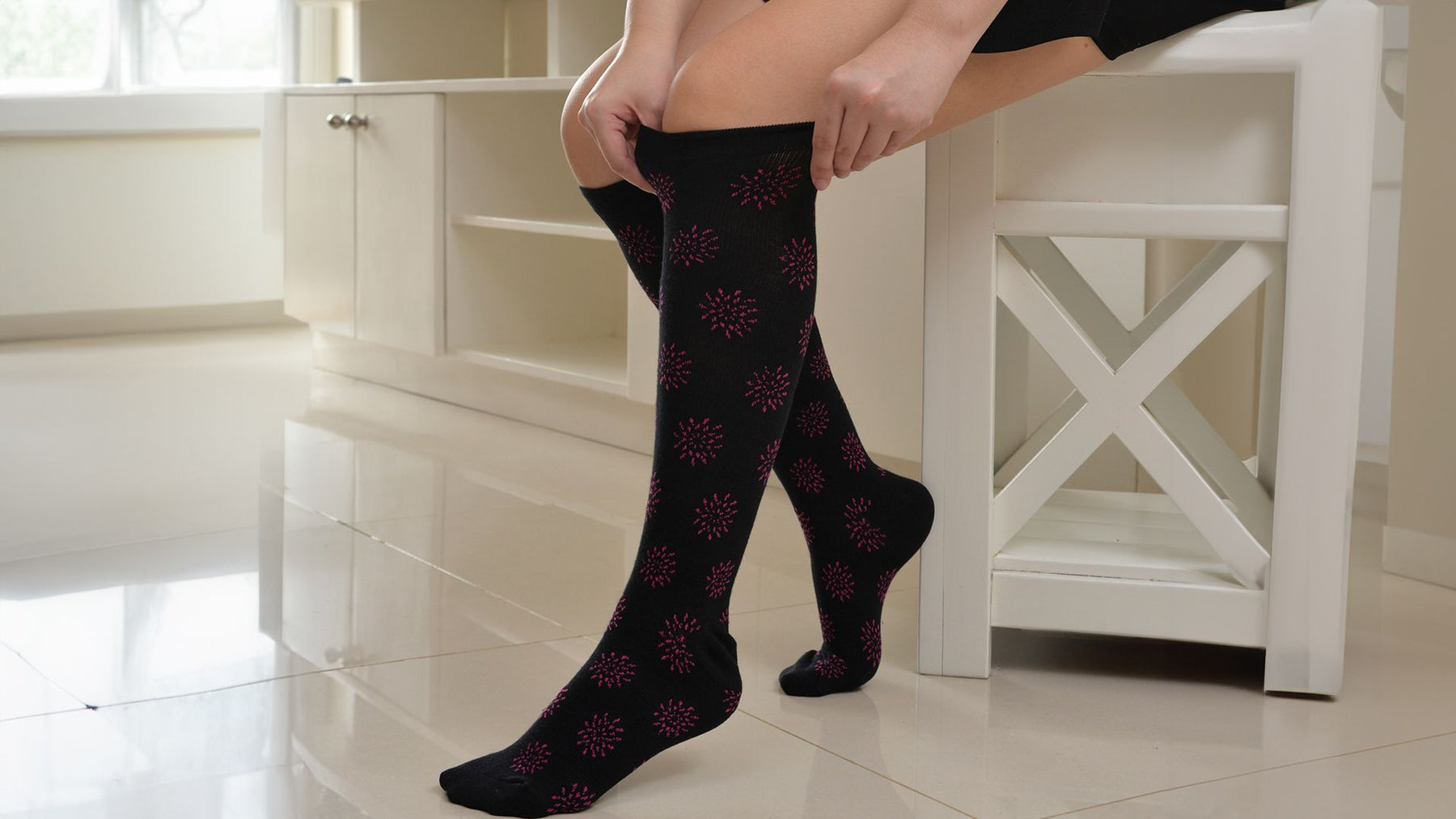
10 Myths About Compression Socks You Need to Stop Believing
Compression socks have become a popular go-to for improving circulation, reducing swelling, and boosting athletic performance. However, despite their widespread use, plenty of myths still swirl around them. Are they really as effective as people say? Are they uncomfortable or only for medical conditions? Let’s break down some of the most common misconceptions about compression socks and set the record straight once and for all.
1. Myth: Compression Socks Are Only for Athletes
Compression socks are often linked to athletes, but their benefits go far beyond just sports. These socks are designed to improve blood circulation and reduce swelling, making them incredibly helpful for anyone who spends long hours sitting or standing—whether you're an office worker, pregnant, a frequent traveler, or living with diabetes or another chronic condition. In fact, if you experience fatigue or discomfort from standing or sitting for long periods, compression socks can be a game-changer for your circulation and overall comfort.
2. Myth: Compression Socks Are Uncomfortable
A common misconception is that compression socks are uncomfortable or too tight. In reality, today’s compression socks are made with soft, stretchy, and breathable materials that ensure comfort even during long periods of wear. They’re designed to apply gentle pressure to the legs, boosting circulation without causing discomfort. When properly fitted, compression socks should feel like a supportive hug for your legs, promoting healthy blood flow without feeling restrictive.
3. Myth: Compression Socks Should Be Tight Enough to Hurt
Compression socks are meant to provide consistent, graduated pressure that decreases as it moves up the leg. The pressure is designed to feel snug but should never be painful. If compression socks are causing discomfort or pain, they might be too tight, the wrong compression level, or simply not the right fit. It's important to choose the correct compression level for your needs, as well as the appropriate size, to avoid injury and ensure comfort.
4. Myth: Compression Socks Are Only for People with Medical Conditions
Compression socks are often associated with treating medical conditions like varicose veins, deep vein thrombosis (DVT), chronic venous insufficiency, and edema. However, they’re also incredibly effective for prevention and promoting overall leg health. Even if you don’t have a specific medical issue, compression socks can help if you spend long hours on your feet, experience leg fatigue, or deal with swelling. Whether you're pregnant, a frequent traveler, or someone who exercises intensely, compression therapy can help you.
5. Myth: Compression Socks Are Just a Trend
Compression therapy is far from a passing trend. It has been used for centuries to improve circulation and reduce swelling. Historically, it was used by medical professionals to treat conditions like varicose veins and lymphedema. Today, compression therapy is supported by a strong body of research demonstrating its effectiveness in preventing DVT, alleviating leg pain, enhancing circulation, and promoting faster recovery from exercise. Compression socks are not a fad—they’re a scientifically proven tool for improving leg health.
6. Myth: You Can Wear Compression Socks All Day Without Any Issues
While wearing compression socks during the day can be highly beneficial, it’s important to take breaks to avoid skin irritation or poor circulation. Wearing compression socks overnight or for prolonged periods without removal can restrict blood flow if not properly fitted or sized. Most compression socks are designed for daytime use, and wearing them at night isn’t recommended unless specifically advised by a healthcare professional. Always follow the manufacturer’s recommendations for wear, and ensure they are removed when not needed, especially before bed.
7. Myth: Compression Socks Are Only for Older Adults
Compression socks are not age-specific—they can be beneficial for people of all ages. While older adults may experience more leg swelling or circulation problems, younger people can benefit, too. For example, athletes and active individuals can use compression socks to improve performance, reduce muscle fatigue, and recover faster after exercise. Pregnant women, people who stand or sit for long periods, and frequent travelers can all benefit from compression socks, regardless of age.
8. Myth: All Compression Socks Are the Same
Not all compression socks are made equal. They come in various styles, compression levels, materials, and lengths, so it’s important to choose the right pair for your specific needs. Compression levels are measured in millimeters of mercury (mmHg) and vary based on the condition you're addressing. Light compression (8-15 mmHg) is generally used for mild swelling or fatigue, while higher compression (20-30 mmHg or more) is used to treat more severe conditions. Additionally, the fabric and design of compression socks can differ, with some offering more breathability or moisture-wicking properties than others.
9. Myth: Compression Socks Will Cure Varicose Veins and Other Leg Issues
While compression socks can significantly help with symptoms related to varicose veins and improve circulation, they are not a cure. Compression socks can relieve swelling, reduce the discomfort caused by varicose veins, and improve overall leg health, but they don’t eliminate the underlying causes of these issues. To address more severe conditions, additional treatments or medical interventions may be necessary, and compression socks should be used as part of a comprehensive treatment plan.
10. Myth: Compression Socks Are Too Expensive
Many people assume that compression socks are too expensive, but that’s not necessarily true. While some high-end brands may come with a hefty price tag, there are plenty of affordable options that offer great quality and benefits. Compression socks vary in price depending on factors like brand, materials, and compression level. When you factor in the long-term health benefits—like improved circulation, reduced swelling, and enhanced comfort—the investment is often worth it. A good pair of compression socks could even save you from more costly medical treatments later on.
Looking for affordable, high-quality compression socks? Try Pembrook Compression Socks! Made with durable materials and designed for comfort, they’re a great choice for improving circulation and relieving leg fatigue, all without breaking the bank.
Conclusion
By clearing up these common myths, we hope you feel empowered to incorporate compression socks into your routine—whether you're recovering from a workout, managing a medical condition, or simply looking to alleviate leg fatigue.
Remember, the right pair of compression socks can make a world of difference, but it’s important to choose ones that meet your unique needs. Don’t hesitate to consult with a healthcare professional to find the perfect fit, compression level, and material for your lifestyle. When you wear the right compression socks, you’re not just improving your leg health—you’re investing in your overall well-being.
